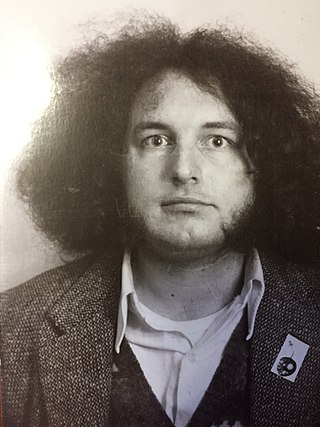
Pierre Bismuth is a French artist and filmmaker based in Brussels. His practice can be placed in the tradition of conceptual art and appropriation art. His work uses a variety of media and materials, including painting, sculpture, collage, video, architecture, performance, music, and film. He is best known for being among the authors of the story for Eternal Sunshine of the Spotless Mind (2004), for which he won the Academy Award for Best Original Screenplay alongside Michel Gondry and Charlie Kaufman. Bismuth made his directorial debut with the 2016 feature film Where is Rocky II?.

Antoni Taulé is a Spanish painter, architect, and performer. A street artist during the sixties, his art has been labelled as part of hyperrealism and a representative of the “new figurative” movement. He paints classical empty buildings and interiors: ballrooms, office receptions, halls of the Louvre museum, chambers of the Prado, the Palace of Versailles, monumental spaces that fuse reality and fiction under a fleeting atmosphere of light.
The building is actually just like a person. It has a heart, lungs, a nervous system, intestines, and eyes ... I am fascinated with what one can see, with the reason why does one look at it or avoid looking, and how one reflects upon what he sees. In one word my work is about how a man functions.

William MacKendree is an American artist. He was born in Augusta, Georgia in 1948. He studied Philosophy and Visual Arts at Georgia State University in Atlanta. Following the completion of his university degrees, he left the U.S. to live and work in Greece between 1975 and 1982.
Catherine Gfeller is a Swiss artist. She currently lives and works in Paris and Southern France after having lived in New York from 1995 to 1999.

CAPC musée d'art contemporain de Bordeaux, formerly the Centre d'arts plastiques contemporains (CAPC), is a museum of modern art established in 1973 in Bordeaux, France.
The Fonds national d'art contemporain is a public collection of contemporary art in France. It does not hold exhibitions but acquires and stores works of art that it loans to museums, cultural institutions and temporary exhibitions in France and abroad. It is the largest collection of contemporary art in France.

Tania Mouraud is a contemporary French video artist and photographer.
Jan Kopp is a German visual artist. He has lived in France since 1991.

Tsuneko Taniuchi, born in Nishinomiya, Hyōgo, Japan, in 1946, is a contemporary artist, who uses performance as her main medium. Her practice, which oscillates between scripted situations and participatory works, aims to question cultural, social, and sexual constructions, linked to notions of identity, immigrations, and feminism.
A Fonds régional d'art contemporain (Frac) is a public regional collection of contemporary art set in one of the metropolitan or overseas regions of France. There are currently 23 Fracs across the country, organised into a national network called Platform since 2005. Fracs are funded by regions, by the state through the Ministry of Culture and by municipalities. Originally without venues, Fracs are now hosted in repurposed historical buildings, or in specifically-built art museums, depending on the size of their collection.

Meir Eshel, known professionally as Absalon, was an Israeli-French artist and sculptor.
Edith Dekyndt is a visual artist.
Olivier Vadrot is a French artist and designer that studied architecture. In his work, he embraces many disciplines ranging from music, to scenography and public furniture. He is known for his mobile architecture and exploration of the ergonomy of ancient theatres. His works have been exhibited at Centre Pompidou and at the 2017 Biennale of Architecture in Lyon. Some of his projects are part of the collections owned by French cultural institutions such as FRAC Aquitaine in Bordeaux, musée régional d'art contemporain Occitanie (Mrac), FRAC Paca in Marseille and Frac Île-de-France.

Jacques Halbert is a French contemporary artist.
Elsa Werth is a French artist who lives and works in Paris.
Paul Devautour is a French artist born in 1958 who lives and works in Shanghai.

Véronique Joumard is a French artist.
Martine Aballéa is a French-American artist born in 1950.

Miri Segal is a new media artist currently living in Tel Aviv. Segal was born 1965, in Haifa, Israel. Since the late 90s she has created video and media installations, light objects and theatrical pieces. Prior to her career as an artist she studied Mathematics. In 1997, She received a PhD in mathematics from the Hebrew University in Jerusalem under the instruction of Prof. Menachem Magidor. In 1998, she studied Art at the San Francisco Art Institute. Segal owes her taste for the mechanisms of perception and the construction of sense-stimulating illusions to her mathematical background, according to art historian Hanna Almeka.
Marinette Cueco was a French plastic artist. She was also known for her creations using plants and minerals.


![Work from CNAP in the center of the rotunda of the Musee Guimet in 2012. Participatory work on the floor by Marie-Ange Guilleminot [fr] (1999), swatches on the wall by Michael Woolworth (2003). Des Tsuru dans la rotonde du musee Guimet (Paris) (8212585335).jpg](http://upload.wikimedia.org/wikipedia/commons/thumb/7/73/Des_Tsuru_dans_la_rotonde_du_mus%C3%A9e_Guimet_%28Paris%29_%288212585335%29.jpg/220px-Des_Tsuru_dans_la_rotonde_du_mus%C3%A9e_Guimet_%28Paris%29_%288212585335%29.jpg)









